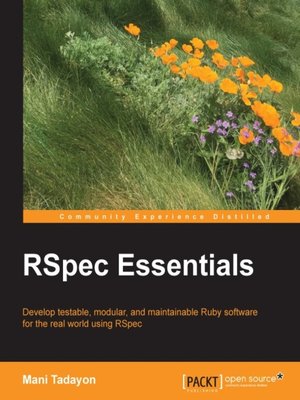
Sign up to save your library
With an OverDrive account, you can save your favorite libraries for at-a-glance information about availability. Find out more about OverDrive accounts.
Find this title in Libby, the library reading app by OverDrive.



Search for a digital library with this title
Title found at these libraries:
| Library Name | Distance |
|---|---|
| Loading... |
Develop testable, modular, and maintainable Ruby software for the real world using RSpec
About This Book
Who This Book Is For
This book is aimed at the software engineer who wants to make their code more reliable and their development process easier. It is also aimed at test engineers who need to automate the testing of complex systems. Knowledge of Ruby is helpful, but even someone new to the language should find it easy to follow the code and tests.
What You Will Learn
This book will teach you how to use RSpec to write high-value tests for real-world code. We start with the key concepts of the unit and testability, followed by hands-on exploration of key features. From the beginning, we learn how to integrate tests into the overall development process to help create high-quality code, avoiding the dangers of testing for its own sake.
We build up sample applications and their corresponding tests step by step, from simple beginnings to more sophisticated versions that include databases and external web services. We devote three chapters to web applications with rich JavaScript user interfaces, building one from the ground up using behavior-driven development (BDD) and test-driven development (TDD).
The code examples are detailed enough to be realistic while simple enough to be easily understood. Testing concepts, development methodologies, and engineering tradeoffs are discussed in detail as they arise. This approach is designed to foster the reader's ability to make well-informed decisions on their own.
Style and approach
This comprehensive tutorial is packed with real-world examples of testing with RSpec. The most important features of RSpec are introduced in the early chapters and are used in examples of growing complexity in the following chapters. Concepts and methodologies are discussed in detail.







